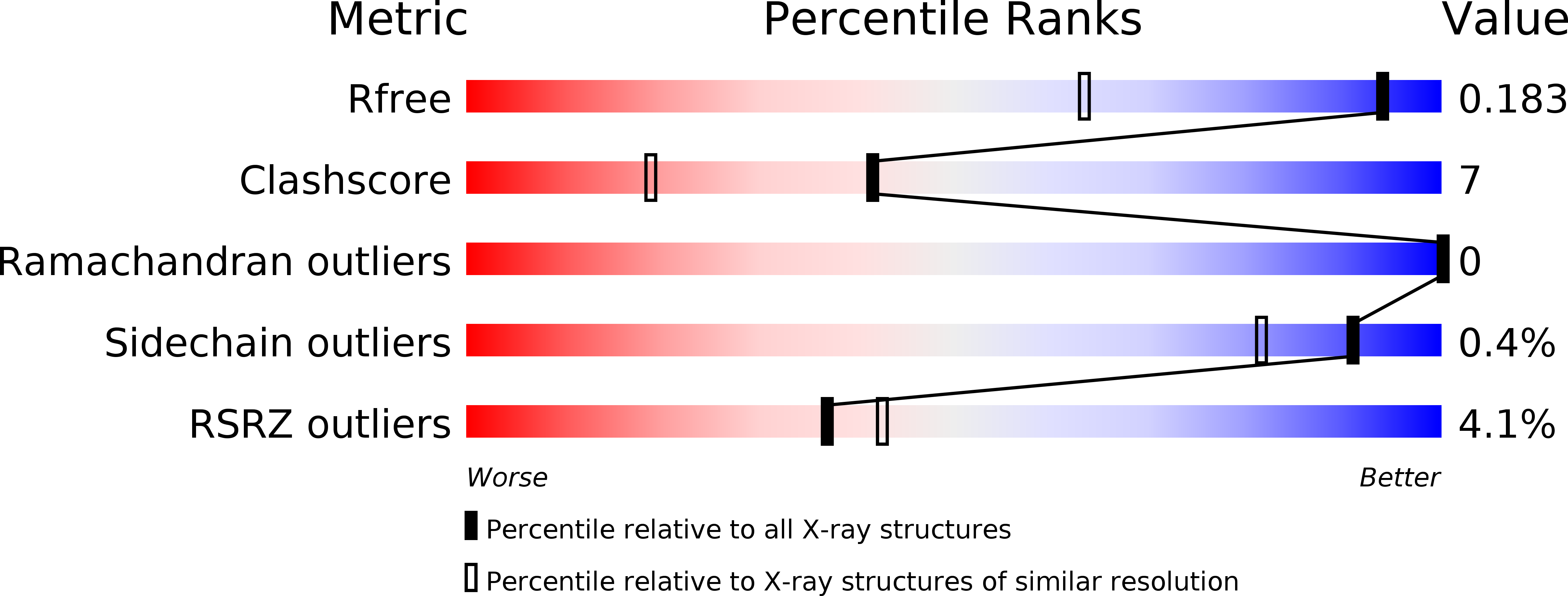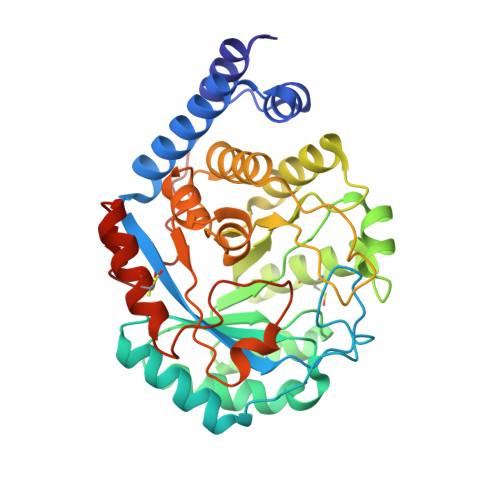X-ray Structure of the [FeFe]-Hydrogenase Maturase HydE from Thermotoga maritima
Nicolet, Y., Rubach, J.K., Posewitz, M.C., Amara, P., Mathevon, C., Atta, M., Fontecave, M., Fontecilla-Camps, J.C.(2008) J Biological Chem 283: 18861-18872
- PubMed: 18400755
- DOI: https://doi.org/10.1074/jbc.M801161200
- Primary Citation of Related Structures:
3CIW, 3CIX - PubMed Abstract:
Maturation of the [FeFe]-hydrogenase active site depends on at least the expression of three gene products called HydE, HydF, and HydG. We have solved the high resolution structure of recombinant, reconstituted S-adenosine-L-methionine-dependent HydE from Thermotoga maritima. Besides the conserved [Fe(4)S(4)] cluster involved in the radical-based reaction, this HydE was reported to have a second [Fe(4)S(4)] cluster coordinated by three Cys residues. However, in our crystals, depending on the reconstitution and soaking conditions, this second cluster is either a [Fe(2)S(2)] center, with water occupying the fourth ligand site or is absent. We have carried out site-directed mutagenesis studies on the related HydE from Clostridium acetobutylicum, along with in silico docking and crystal soaking experiments, to define the active site region and three anion-binding sites inside a large, positive cavity, one of which binds SCN(-) with high affinity. Although the overall triose-phosphate isomerase-barrel structure of HydE is very similar to that of biotin synthase, the residues that line the internal cavity are significantly different in the two enzymes.
Organizational Affiliation:
Laboratoire de Cristallographie et Cristallogen¨¨se des Prot¨¦ines, Institut de Biologie Structurale J.P. Ebel, Commissariat ¨¤ l'Energie Atomique, CNRS, Universit¨¦ J. Fourier, 41 Rue J. Horowitz, 38027 Grenoble Cedex 1, France.






















